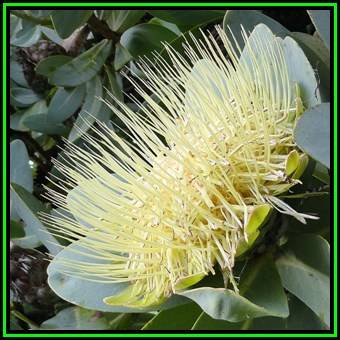
Protea nitida - 6 Seed Pack - Indigenous Endemic Cut Flower Fynbos Shrub Tree, New
Check my rate
| Main centres: | 1-3 business days |
| Regional areas: | 3-4 business days |
| Remote areas: | 3-5 business days |

| Main centres: | 1-3 business days |
| Regional areas: | 3-4 business days |
| Remote areas: | 3-5 business days |
Protea is both the botanical name and the English common name of a genus of South African flowering plants, sometimes also called sugarbushes in Eglish and Suikerbos in Afrikaans. The genus Protea was named after the Greek god Proteus, who could change his form at will, because plants within this genus have such a wide variety of forms. The Proteaceae family to which proteas belong is an ancient one. Its ancestors grew in Gondwana, 300 million years ago. Most protea occur south of the Limpopo River. 92% of the species occur only in the Cape Floristic Region, a narrow belt of mountainous coastal land from Clanwilliam to Grahamstown, South Africa. They are evergreen shrubs or trees usually found in fynbos. Protea blossoms make excellent cut flowers, keeping their colour for up to three weeks.
Protea nitida commonly known as Tree Protea, Waggon Tree or Wagon Tree in English and Waboom in Afrikaans is a South African endemic species. It grows in the Eastern Cape Province and Western Cape Province. With its long history and good looks, Protea nitida is a gem in the fynbos world. It is the only Protea species to form large trees yielding usable timber. Young crimson leaves give way to mature, bluish, sea-green leaves. Large, greenish white flower heads appear year-round with a peak from May to August. |